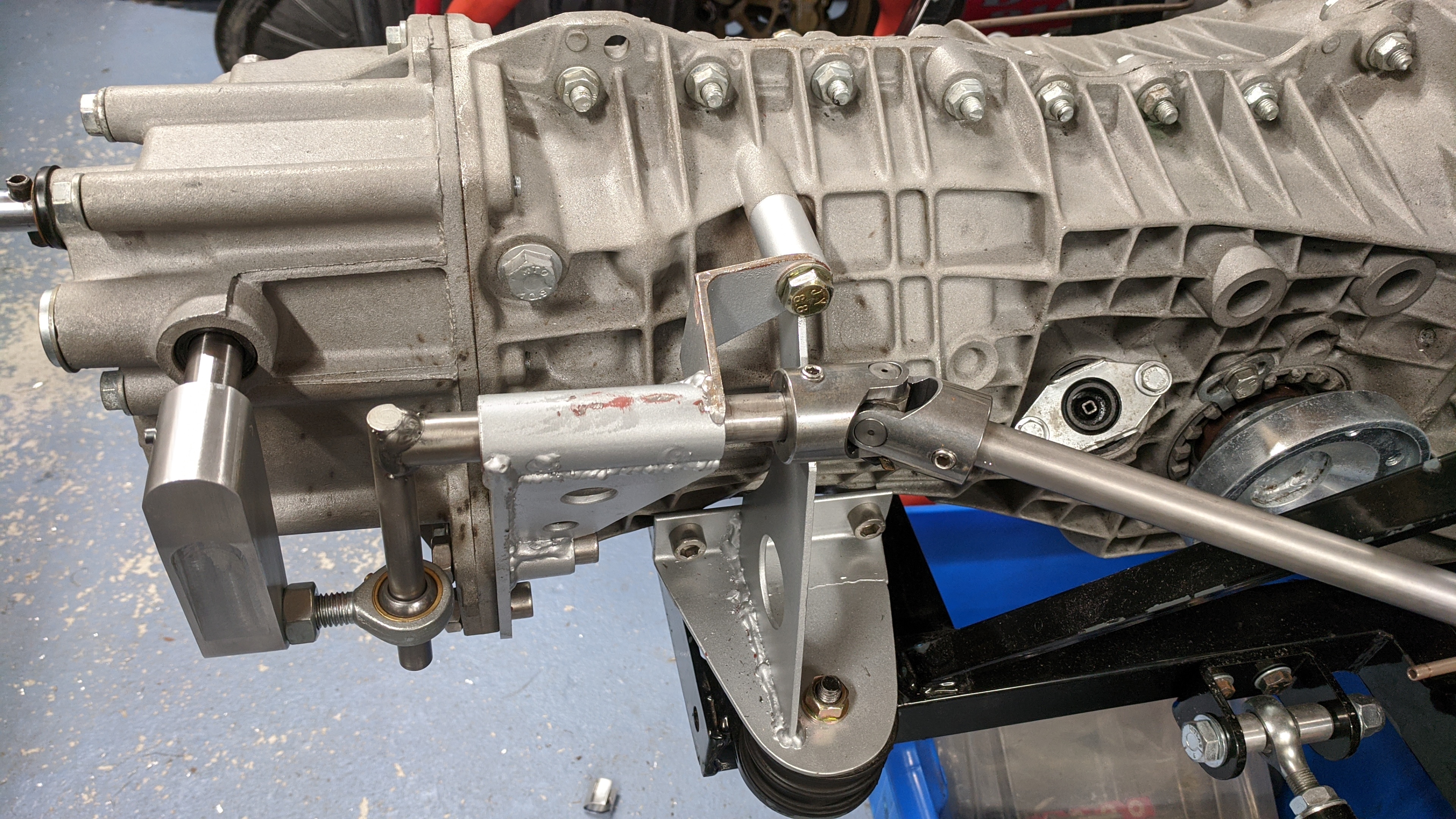Shaun,
I just used a 3/16" triangular plate welded to the existing shifter arm at the transmission.
Eddy is right, the cable is the reverse lockout mechanism provided by Tornado. However, it is so hard to get into reverse anyway, that I don't think it is necessary. I am limited by the side-to-side motion of the shift lever at the hand since there are two side walls on either side. The shifter hits both walls (for reverse and for 5th) even after I shortened the lateral throw of the hand shifter arm. I have to hit it pretty hard to get reverse. You do run the danger that you forget to pull the cable and try to force it into reverse you could bend the lockout mechanism or mount. I have considered removing it.
Mike,
I totally agree with you that tubes should not be put into bending as a good design rule for frames and any place to avoid unwanted compliance. In this situation, we have to move the shift mechanism on the transmission in-and-out as well as rotate it. To do that with one shift rod requires that the rod be loaded longitudinally (for rotation of the transmission shift mechanism) and and it must rotate (to move the shift mechanism in-and-out). Thus, the shift rod has to twist and react the torque at some point. This does put a bending load on the shift rod. As you say, there should be a bushing or bearing much closer to the torque reaction point instead of three feet away. If the shift rod was running parallel to the transmission then there would be no lateral motion of the shift rod when rotating. Then a bushing next to the torque reaction arm would be ideal, but that is not the case with the current design.
Aluminum has its place when weight is a premium; however in this case where we need stiffness, realize that for the same dimensions, aluminum will have 1/3 of the stiffness as steel. I tend to agree for a street car the difference in weight of a solid rod versus a tube isn't significant. In a racecar, weight is important. As Carroll Smith once told me, "If you have a 1000 pound car and you would like to reduce the weight by 50 pounds, you won't find a 50 pound component that you could just remove; however, you might be able to remove 5% of the weight of every component". So if you have the choice, why not make each part lighter.
I also agree that the inertia of the shifter is really not significant in this car. However, just an interesting side note, in the Newman-Haas CART car back in the day, they found that the solid aluminum shifting knob would actually shift the transmission under hard braking. One of the engineers (my former student) was asked to design a hollow aluminum ball for the shifter.
-Bob Woods
Tornado GT40 in Texas







